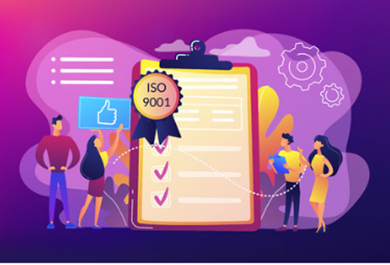- Home
- Continuous Improvement Certification Online
- Evaluation of Total Quality Management
Why EVALUATION OF TOTAL QUALITY MANAGEMENT Succeeds
Evaluation of Tqm

The evaluation of total quality management allows an organization to demonstrate its ability to consistently provide products and services that meet customer requirements, in compliance with regulations.
Is essential to ensure that there is sufficient information on qualitative and quantitative matters according to the characteristics of the product or service, that is; have historical information in order to guarantee a before, a current state and a future state of the connotations that derive from the evaluation of the product or service itself, this takes place through a Quality Management System.
A quality management system (QMS) is a formalized system that documents the processes, procedures, and responsibilities for achieving quality policies and objectives. A QMS helps coordinate and direct the activities of an organization to meet customer and regulatory requirements and continuously improve its effectiveness and efficiency.
The management systems according to international standards were formalized with the publication of the international standard ISO 9001: 2000 - Quality Management System; issued by the International Organization for Standardization.
ISO 9001 in its most recent update ISO9001: 2015 is the international standard that specifies the requirements for quality management systems.
Organizations generally use the acronym: QMS, to refer to ISO 9001, or the group of documents that detail the QMS, actually refers to the entire system, since the documents only serve to describe the system.
benefits of a quality management system

The implementation of a quality management system affects all aspects of an organization's performance.
Two general benefits to designing and implementing documented quality management systems include:
I. Meeting customer requirements, which helps instill confidence in the organization, which in turn leads to more customers, more sales, and more repeat business.
II. Meeting the organization's requirements, ensuring compliance with regulations and the provision of products and services in the most cost and resource efficient manner, creating room for expansion, growth and profit.
Among these global benefits are advantages such as helping to communicate availability to produce consistent results, prevent errors, reduce costs, ensure that processes are defined and controlled, and continually improve the organization's offerings.
What is the best way to view the ISO 9001 Quality Management System requirements in order to make the individual processes within your system more compatible with each other?
Each individual process can be improved by applying a Plan-Do-Check-Act approach, but the overall system can also benefit by this philosophy. By looking at the separate processes as being linked in one large cycle for improvement, you can help focus the improvement of the individual processes toward one greater good for the company.
To learn more about evaluation see:
- How to Evaluate a Quality Management System
- How to Compare Pre- and Post- TQM Performance?
- Audit cadence for TQM: monthly vs quarterly—what to review and report.
- Balanced Scorecard vs EFQM for evaluating TQM: which fits our organization?
- How to build a TQM baseline (defects, COPQ, Cpk, NPS) before improvements
WANT TO GO DEEPER ON EVALUATING TQM?
Explore these step-by-step guides and tools:
- How to Evaluate a Quality Management System
- How to Compare Pre- and Post- TQM Performance?
- Audit cadence for TQM: monthly vs quarterly—what to review and report
- Balanced Scorecard vs EFQM for evaluating TQM: which fits our organization?
- How to build a TQM baseline (defects, COPQ, Cpk, NPS) before improvements
Turn your TQM evaluation into visible wins
Baselines, scorecards, and audits only matter if they drive action. Our Continuous Improvement Certification (Online) gives you a step-by-step playbook to go from measurements to real reductions in defects, COPQ, and lead time across any process.
See the Continuous Improvement Certification